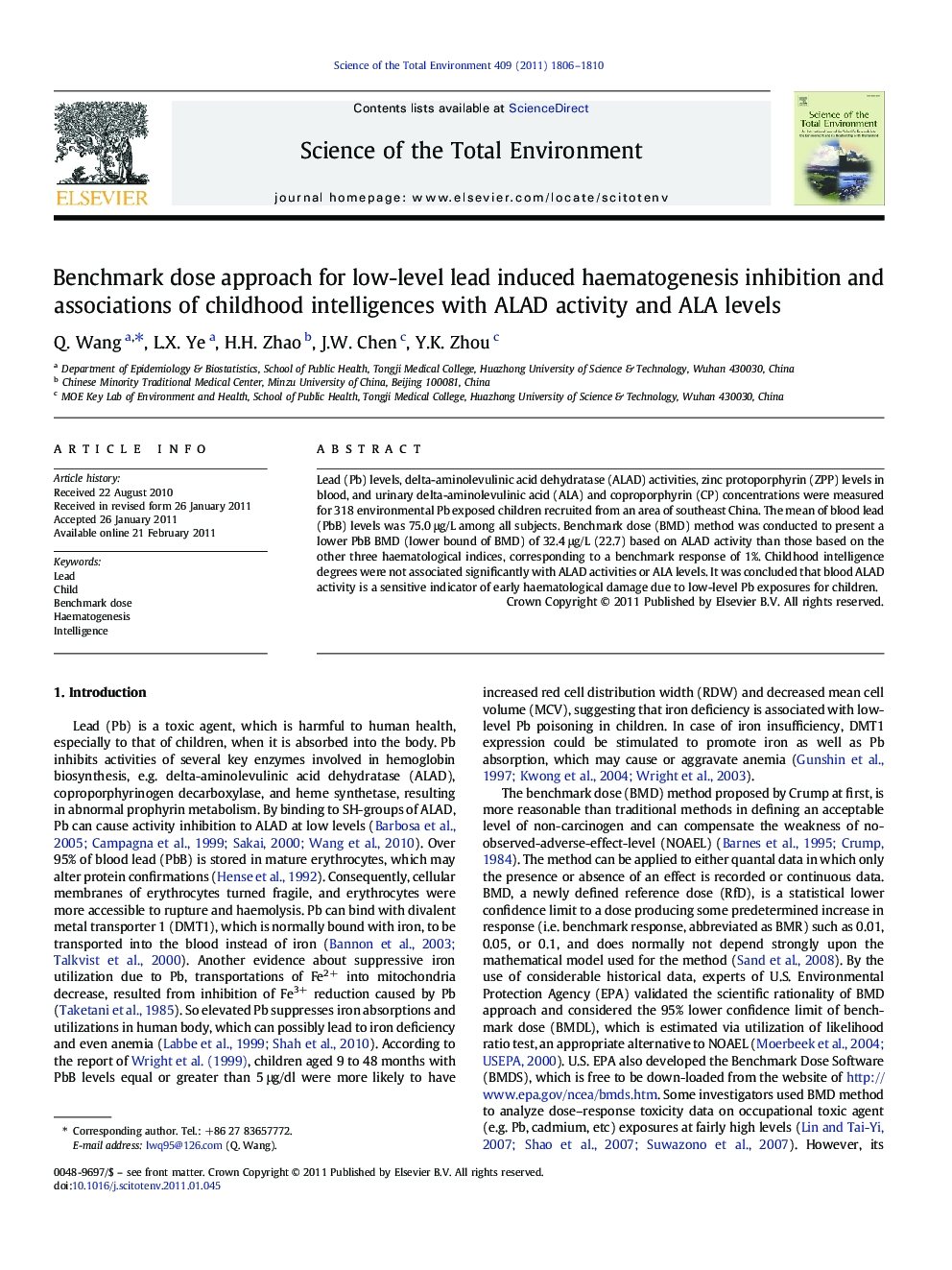| Article ID | Journal | Published Year | Pages | File Type |
|---|---|---|---|---|
| 4430218 | Science of The Total Environment | 2011 | 5 Pages |
Lead (Pb) levels, delta-aminolevulinic acid dehydratase (ALAD) activities, zinc protoporphyrin (ZPP) levels in blood, and urinary delta-aminolevulinic acid (ALA) and coproporphyrin (CP) concentrations were measured for 318 environmental Pb exposed children recruited from an area of southeast China. The mean of blood lead (PbB) levels was 75.0 μg/L among all subjects. Benchmark dose (BMD) method was conducted to present a lower PbB BMD (lower bound of BMD) of 32.4 μg/L (22.7) based on ALAD activity than those based on the other three haematological indices, corresponding to a benchmark response of 1%. Childhood intelligence degrees were not associated significantly with ALAD activities or ALA levels. It was concluded that blood ALAD activity is a sensitive indicator of early haematological damage due to low-level Pb exposures for children.
Research Highlights► The BMD method was applied to present BMDs and BMDLs of PbB based on haematogenesis indices as delta-aminolevulinic acid dehydratase (ALAD), delta-aminolevulinic acid (ALA), zinc protoporphyrins (ZPP), and coproporphyrins (CP) for children with low-level lead exposures. ► BMD/BMDL of PbB was lowest based on ALAD than on the other three biomarkers, suggesting ALAD a sense indicator of lead-reduced haematogenesis. ► Possible associations of childhood intelligences with ALAD activities and ALA levels were also investigated among all subjects, which is novel in this study field.
